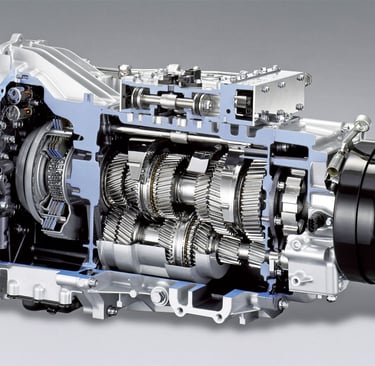Truck Transmission: A Comprehensive Guide to All Sensors and Their Functions
3/19/20252 min read


Introduction to Truck Transmission Sensors
Truck transmissions are vital components that ensure the efficient operation of heavy-duty vehicles. They consist of various sensors that monitor performance and relay critical information to the vehicle’s onboard computer. Understanding these sensors and their functions is essential for truck operators and mechanics alike.
The Role of Each Sensor in Truck Transmission
There are several key sensors in a truck's transmission system, each serving a specific purpose:
1. Transmission Fluid Temperature Sensor: This sensor monitors the temperature of the transmission fluid. Overheating can lead to serious damage, making this sensor crucial for preventing failures by alerting the driver to engage cooling measures.
2. Transmission Speed Sensor: This sensor measures the rotational speed of the transmission input shaft. It provides vital data used by the truck's computer to determine shift timing, ensuring smoother gear transitions.
3. Throttle Position Sensor: Positioned on the throttle body, this sensor relays information about the position of the accelerator pedal. This data helps optimize engine performance by indicating how much power is necessary while driving.
4. Gear Position Sensor: This sensor indicates which gear is currently engaged within the transmission. This information helps in the control strategy of shifting and enhances overall drivability.
5. Park/Neutral Position Switch: This safety switch ensures that the truck can only be started while in either park or neutral, preventing accidents when starting the vehicle.
Importance of Regular Maintenance of Transmission Sensors
Regular maintenance and inspection of truck transmission sensors are critical to ensure longevity and reliability. Sensors can wear out over time, leading to inaccurate readings and, consequently, poor vehicle performance. Truck operators should conduct periodic checks and replace any faulty sensors immediately to maintain optimal transmission efficiency.
Additionally, engaging a professional mechanic to perform diagnostic tests can effectively identify sensor issues. This proactive approach not only maximizes vehicle performance but also minimizes the risk of costly repairs down the line.
In conclusion, understanding the various sensors within a truck transmission system is essential for anyone involved in trucking. From the transmission fluid temperature sensor to the gear position sensor, each component plays a significant role in ensuring smooth and efficient operation. Regular maintenance of these sensors is vital to prevent failures and keep trucks running optimally.
Support
Ask questions and share truck repair tips.
Connect
© 2025. All rights reserved.
